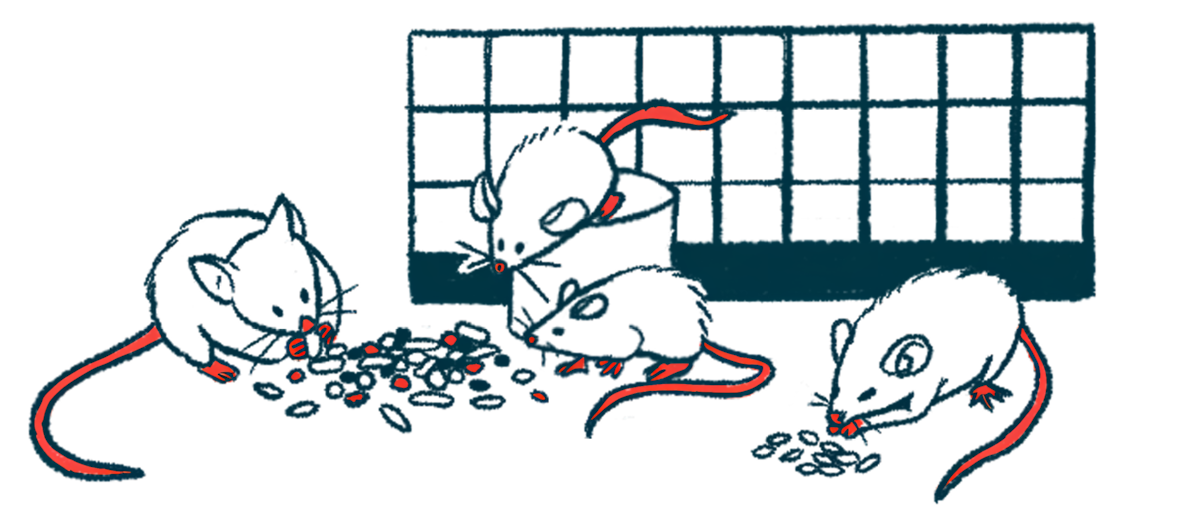Copper supplementation shows promise in Parkinson’s mice
Effects 'beyond expectations,' researcher says

Copper supplementation that reaches the brain reduces the signs and symptoms of Parkinson’s disease in a mouse model, a study found.
Researchers found that copper restored the function of SOD1, an antioxidant enzyme that’s prone to misfolding and forming toxic clumps, impairing the function of dopamine-producing nerve cells that are lost in people with Parkinson’s.
“The results were beyond our expectations and suggest, once further studies are carried out, this treatment approach could slow the progression of Parkinson’s disease in humans,” Kay L. Double, PhD, a professor at the University of Sydney and lead author of the study, said in a university news story.
The study, “Copper supplementation mitigates Parkinson-like wild-type SOD1 pathology and nigrostriatal degeneration in a novel mouse model,” was published in Acta Neuropathologica Communications.
Parkinson’s disease is caused by the progressive death of dopaminergic neurons, the nerve cells that produce the signaling molecule dopamine, in the substantia nigra, a brain region critical for movement control. Current evidence suggests that the formation of abnormal protein clumps in the brain, referred to as Lewy bodies, plays a role in the loss of dopaminergic neurons.
Brain clumps case copper deficiency
Previous work by Double’s team showed that a normally protective antioxidant enzyme called superoxide dismutase 1, or SOD1, misfolds and forms clumps in vulnerable brain regions related to Parkinson’s, including the substantia nigra. Faulty SOD1 clumps also caused nerve cell impairment in the brain and a deficiency in copper, which binds to SOD1 to facilitate its function.
SOD1 is best known for its association with amyotrophic lateral sclerosis (ALS), a condition characterized by the progressive loss of motor neurons, the nerve cells responsible for controlling voluntary movement. While genetic mutations in SOD1 drive ALS in some cases, changes linked with Parkinson’s reflect non-genetic alterations to healthy SOD1.
“As our understanding of Parkinson’s disease grows, we are finding that there are many factors contributing to its development and progression in humans — and faulty forms of the SOD1 protein is likely one of them,” Double said.
Because SOD1 requires copper, and the metal is deficient in Parkinson’s, the team tested whether CuATSM, a drug that can deliver copper to the brain, can correct faulty SOD1 and prevent nerve cell dysfunction in a novel mouse model of Parkinson’s.
The mouse model, called SOCK, was created by replicating two key changes identified in postmortem samples of Parkinson’s brain tissue: elevated SOD1 and decreased copper in nerve cells. At six weeks of age, these mice developed SOD1 clumps in the substantia nigra, followed by motor impairments and significant loss of dopaminergic neurons.
When researchers treated SOCK mice with CuATSM, deposits of misfolded SOD1 in the substantia nigra dropped more than four times compared with untreated control mice. Astrocytes, brain cells that support nerve cell function and are known to store metals like copper, particularly benefited from the copper-based treatment.
In related work, Double’s lab demonstrated that abnormal post-translational modifications, or PTMs — chemical modifications to a protein that occur after it’s been made — drive the misfolding and clumping of healthy SOD1 in SOCK mice.
The team found several altered SOD1 PTMs in untreated SOCK mice, most prominently the oxidation of certain amino acids, the building blocks of proteins, that bind copper.
CuATSM treatment restored most (73%) of the PTM alterations in SOCK mice to levels observed in healthy, control mice, alongside less oxidation of copper-binding amino acids. CuATSM treatment also boosted SOD1’s antioxidant activity.
Within the substantia nigra, SOCK mice exhibited low dopamine levels and high dopamine turnover, a sign that the brain is attempting to compensate for the loss of dopaminergic neurons. CuATSM prevented those changes, as well as the death of dopaminergic neurons, to the extent that there were no differences between treated SOCK mice and healthy mice.
Accordingly, severe problems with motor function observed in untreated SOCK mice were alleviated by CuATSM across a battery of functional assessments. Treated SOCK mice also gained weight without signs that it hampered the growth of other mouse strains, nor was CuATSM toxic to healthy nerve cells at the doses tested.
“We hoped that by treating this malfunctioning protein, we might be able to improve the Parkinson-like symptoms in the mice we were treating – but even we were astonished by the success of the intervention,” Double said. “All the mice we treated saw a dramatic improvement in their motor skills which is a really promising sign it could be effective in treating people who have Parkinson disease too.”
The work was funded by The Michael J. Fox Foundation for Parkinson’s Research, the Shake It Up Australia Foundation, the National Health and Medical Research Council of Australia, and the University of Sydney.







